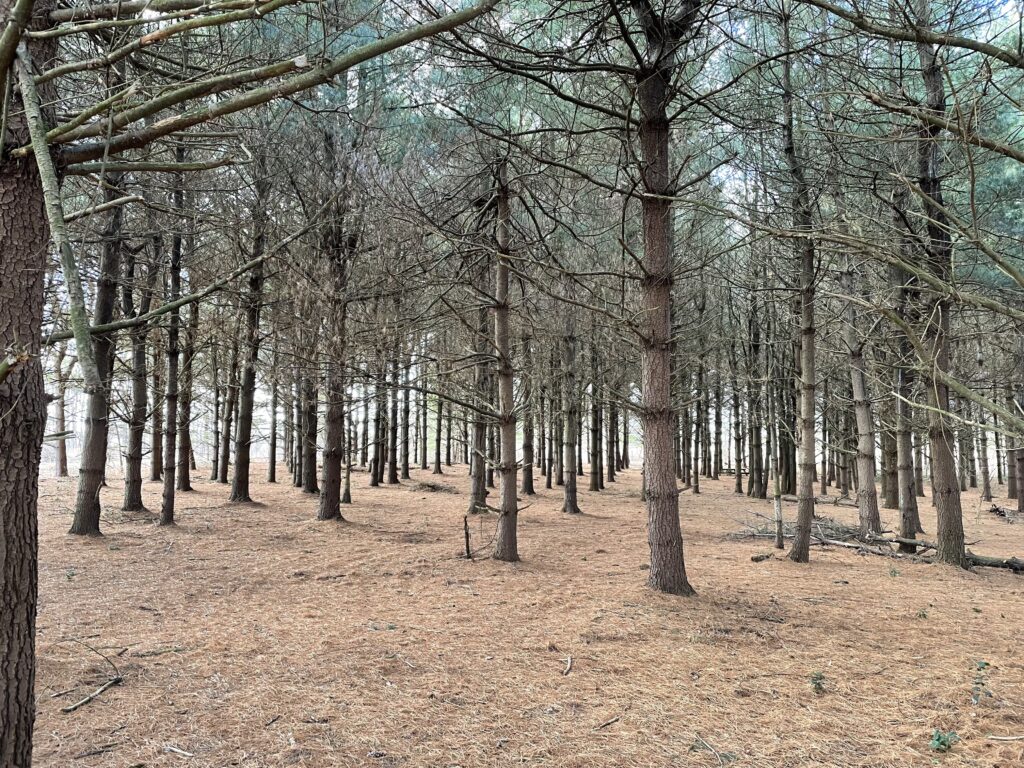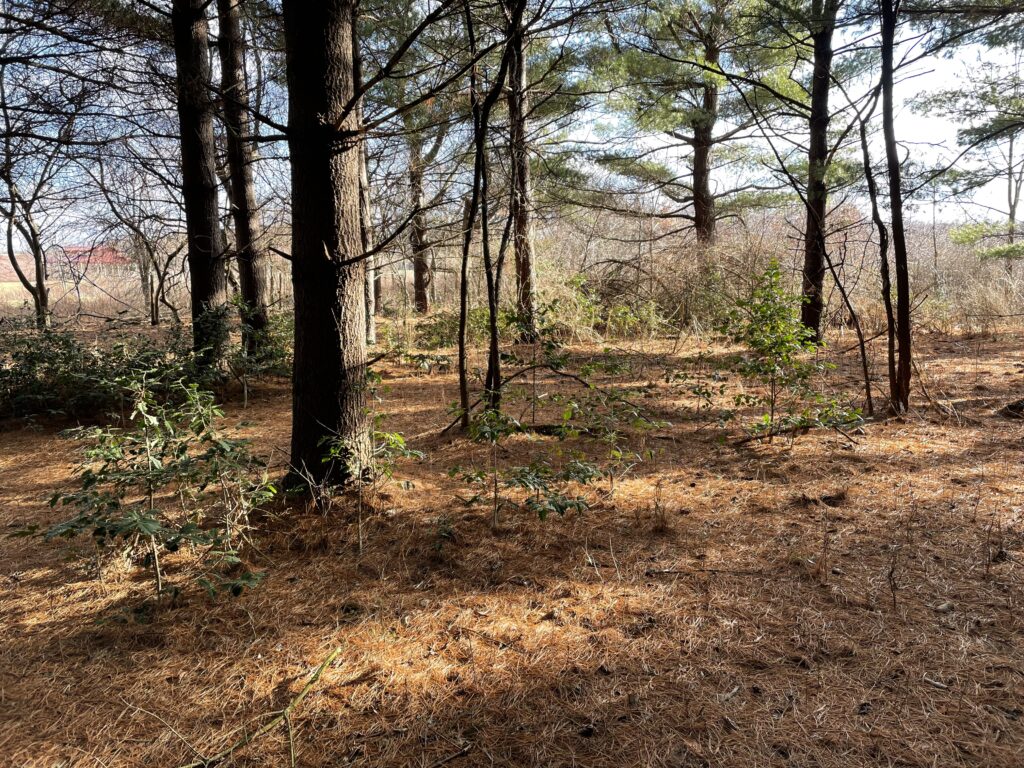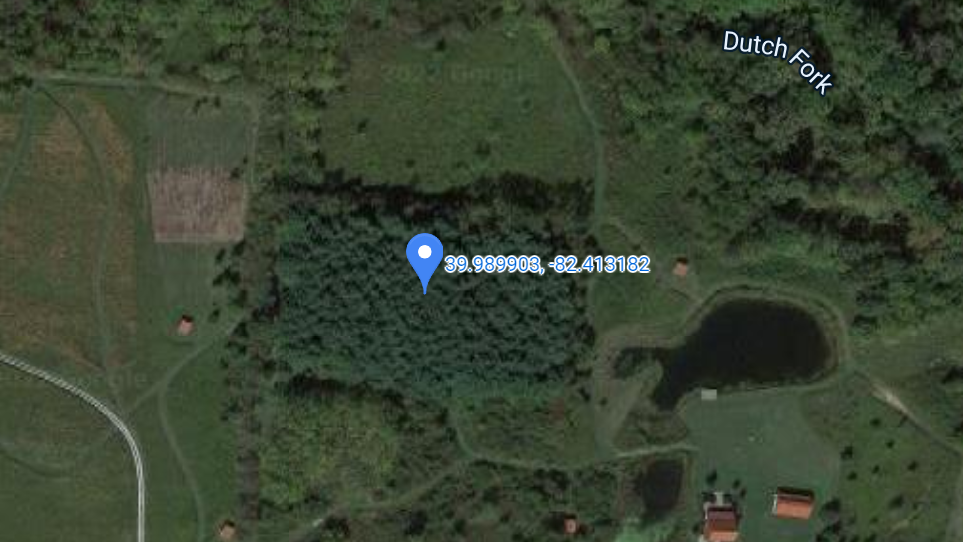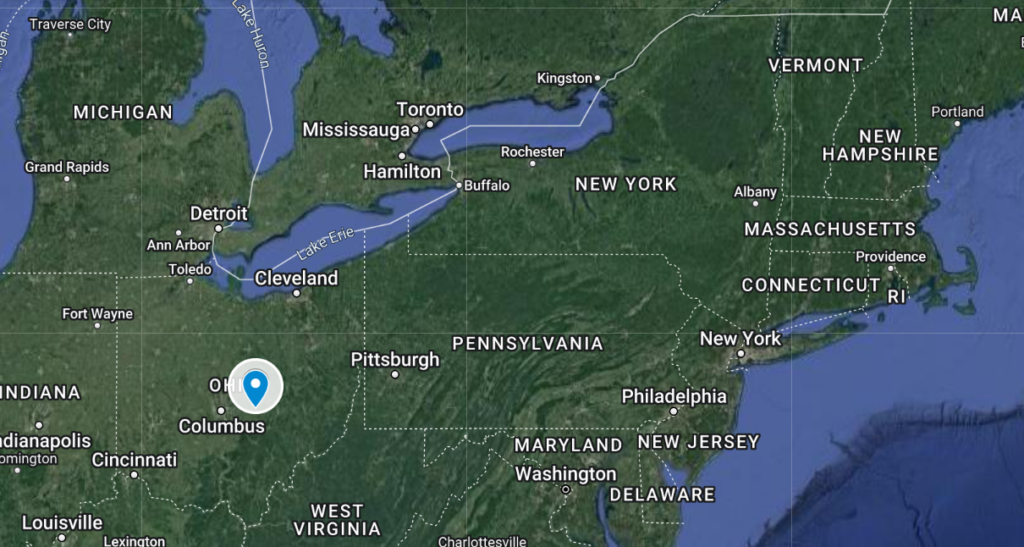The site I chose to observe over break and back at home is the White Pine Woods. White Pine Woods is a part of The Dawes Arboretum in Newark, Ohio, a place I am very close with. White Pine Woods is large stand of several hundred Pinus Strobus or Eastern white pine trees that were planted back in the 1920s as a reforestation project by the Arboretum’s first owner, Beman Dawes. In the later winter months, the White Pine Woods is a popular roosting spot for owls, and owl pellets are in abundance on the forest floor. Additionally, Ilex or holly, is a common understory plant here as well as Phytolacca americana or pokeweed, Circaea canadensis or enchanter’s nightshade, and Toxicodendron radicans, or poison ivy. Flowing north of the White Pines woods is a small creek called Dutch Fork that connects to Dutch Fork Wetlands, a large man-made wetland system. In the springtime, the northeastern part of the White Pine Woods becomes flooded. Additionally, the White Pine Woods is surrounded by many large restoration prairies that provide habitat to a plethora of wildlife and plants.
Compared to Burlington phenology, it reminds me a bit of some pine stands found in Centennial Woods, which are also located near wetlands. Both have similar vegetation though the big difference is that there is no holly found in Centennial, that I know of. On Arboretum grounds is an internationally recognized holly collection, so when the birds eat the fruits from this area they tend to roost in the White Pine Woods and dispose of the seeds there.
As per Honorable Harvest, the gift I left at this site was some leftover apples from thanksgiving for the wildlife that frequent the area.


Location

